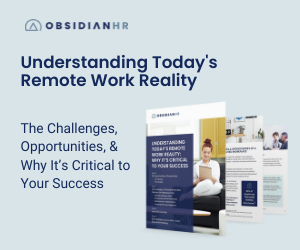There are many benefits of remote work for you and your employees. But as we’re learning, there are still some hurdles you’ll need to tackle as you move forward. Here are the biggest challenges to think about and a resource that shares the best practices for addressing them.
1. Attracting & Retaining Talent
Some organizations may comfortably continue and even expand remote work options in the months to come. But not every organization is in a position to continue remote work to the same degree that was necessary during the pandemic. The struggle will be asking remote workers to come back to the office part-time or even full-time and the potential discord this could create. Hiring is another area that remote work can help with. Employees only looking for a flexible remote-work option is becoming more common. Either way, you’ll have to weigh the risks that come from too much remote work and not enough.
2. Managing Remote Work Performance
Employees and managers alike have had to go through a period of adjustment to remote work, and for some, that adjustment could still feel a little chaotic. One of the big questions you may have is how to manage the performance of remote workers effectively when teams can’t meet in person. Especially as “normal” management processes and performance reviews have been upended in favor of just getting stuff done. Back when remote work seemed temporary, it was normal to improvise. But if remote work continues after the pandemic, you’ll need a more formalized system in place to manage work performance.
3. Maintaining Your Company Culture
It’s much harder to create a consistent and positive work experience when your workforce is spread out. Some employees may choose to come into the office some or all of the time, while others may purely work remotely. Without vigilance, the shared culture and camaraderie you’ve worked hard to build and instill among your employees can quickly crumble, leading to disconnection and low morale.
4. Complying with Laws & Regulations
Remote work brings up all kinds of compliance concerns that you might not have considered before. And though many in-house HR teams may have some legal know-how — there’s more to keep up with. If it’s not your expertise, learning how to be compliant requires ongoing time that could be taking away from more important HR tasks. Risk management becomes even more important dealing with multi-state compliance if you have remote workers in other locations. One accidentally wrong move can hurt your employees and be disastrous both for your organization’s finances and reputation, creating additional liabilities you don’t want.
These challenges may seem daunting. Remote work, however, is positive in many ways for both employees and employers. And looking to the future, of the employees who have been working remotely, 61% want to continue to do so.1 It’s worth considering the tradeoffs of remote work for your teams.
Want to learn more about how you can address these challenges? Download our comprehensive guide to learn the best practices for managing each of these areas. You’ll also learn more about the benefits of remote work for you and your employees.
